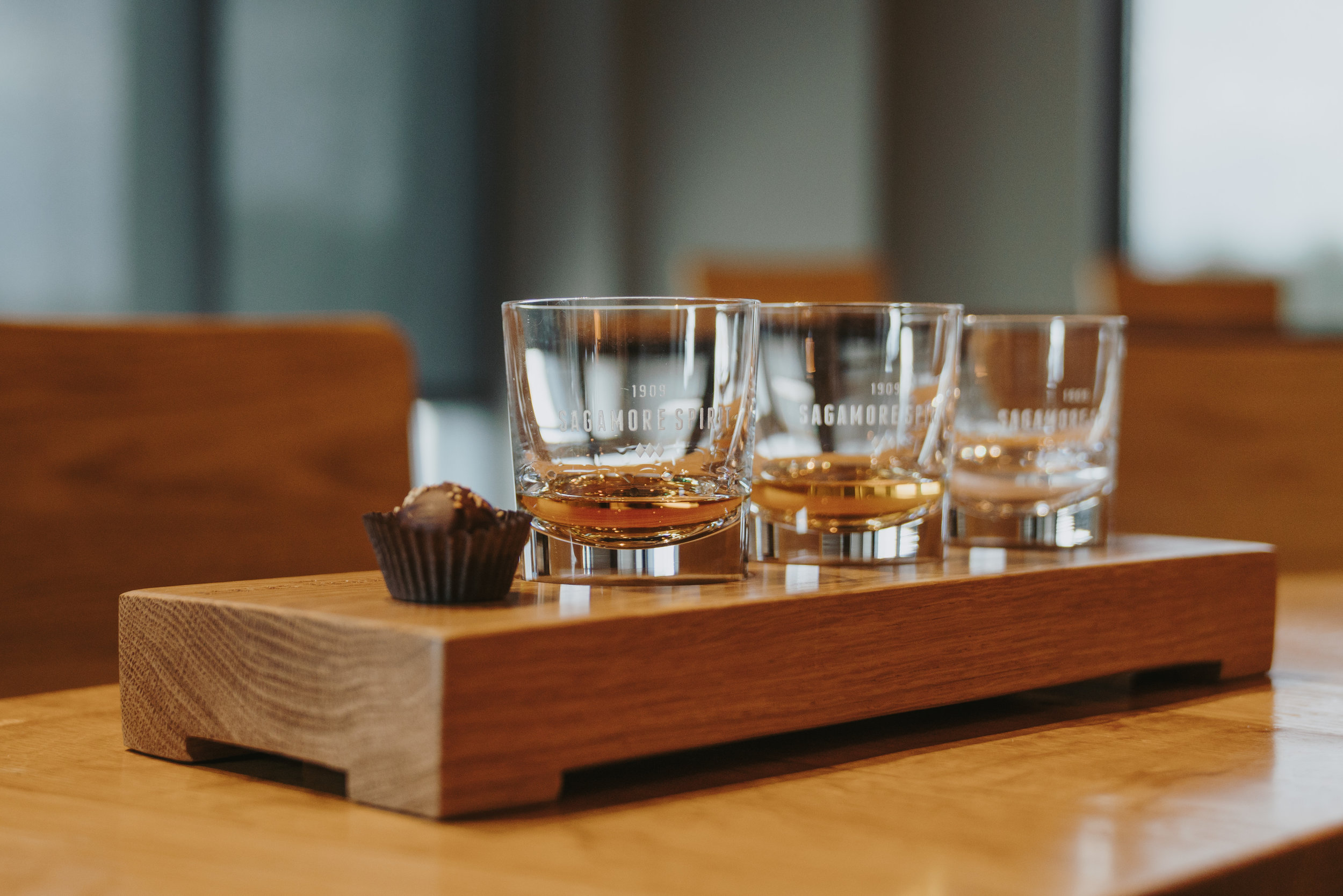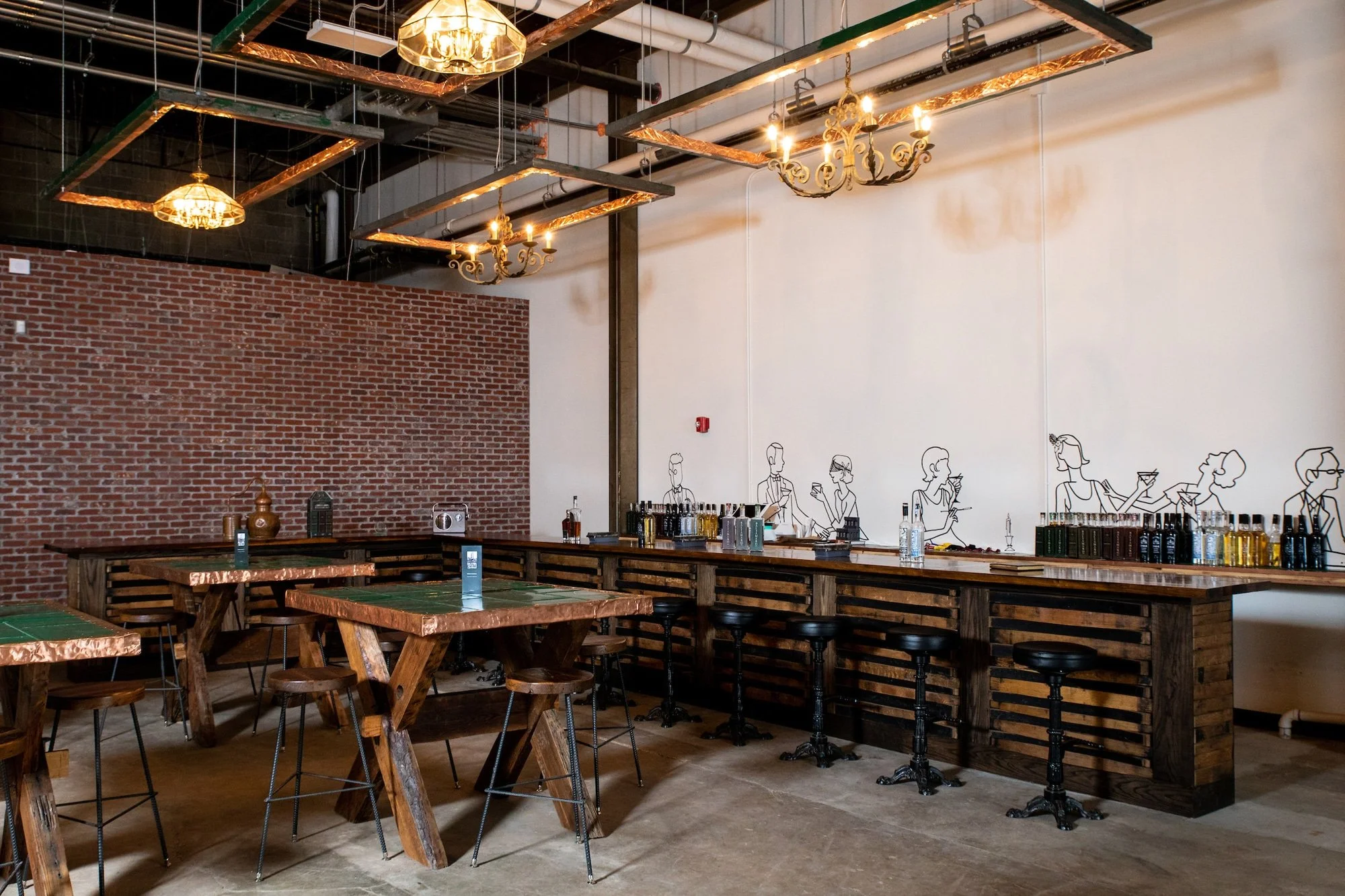What's Next For Rye Whiskey?
photo by Michael Woolsey for Sagamore Spirit
For years, American rye was good as gone. Now it will never be forgotten.
Rye whiskey was pretty much left for dead just 20 years ago. After distilleries recovered from Prohibition, American whiskey was still taking a hit thanks to consumer preferences for beer, wine and clear spirits. Tennessee whiskey and bourbon were the only two American whiskeys that still held any sort of market share. Midwest Grain Products was making the lion’s share of rye whiskey — a core competency that would later gain them notoriety because rye whiskey can be quite difficult to deal with. Production of rye whiskey involves special steps to control foaming and dry out the grain after it is spent, and these are skills folks used to dealing with bourbon mashes aren’t generally accustomed to. Companies like Jim Beam and Wild Turkey continued to produce rye whiskey on a limited basis for their heritage customers. Wild Turkey master distiller Jimmy Russell notably jokes that when rye started to regain its popularity, Wild Turkey doubled production of it — from one day a year to two.
Then a cocktail revolution began to take place. There was a dark period in the 60s, 70s and 80s during which properly prepared drinks were hard to come by in favor of sugary mixes with artificial ingredients. With the rise of the internet and easier ways of sharing information, quality whisky was in demand for classic cocktail recipes. At the center of the whiskey cocktail renaissance was the original cocktail whiskey — rye.
As rye started to stage its comeback, the craft whiskey boom was taking place. Now the larger old guard distilleries like Woodford Reserve were adding to the landscape that once only contained Sazerac, Beam, Wild Turkey, and a few others. Once extinct regional styles of rye whiskey began to make a comeback, from Monongahela (the eastern style most prevalent in the days of George Washington, the name referring to the valley region where the grain was grown) to Pennsylvania rye to Maryland rye, and new regions and styles began to emerge.
photo by Michael Woolsey, Sagamore Spirit
Maryland Rye in the 21st Century
“Rye Whiskey is developing its own regionality,” says Brian Treacy, President of Sagamore Spirit. “Similar to Kentucky Bourbon and Tennessee Whiskey, Empire Rye has made a name for New York-Style Rye Whiskies [made with NY state-grown grain, such as NY Distilling Co. Ragtime Rye and Black Button] and we want to do the same in Maryland. It’s no surprise that rye is on the rise! As inventories grow, we believe Rye Whiskey will compete with bourbon and become a large part of the whiskey category.” Sagamore’s Double Oak rye won gold in the 2019 NY Spirits Competition and its Cognac finish took silver.
“At Sagamore, we refer to our whiskey as Maryland-Style rye,” says Treacy. “It’s proofed with limestone filtered water and has more corn in the mash bill than typical ryes, making it incredibly well-balanced. We also blend two different mash bills — a high rye and a low rye — leading to a complex spirit that’s both smooth and spicy.”
But that’s not to say all rye whiskey made in Maryland is going to be a Maryland-style rye, historically speaking.
What’s the difference between rye style and place name?
“On the one hand, we make Maryland Rye, says Max Lents, founder at Baltimore Spirits Company. “That’s one of the only two protected whiskey categories outside of Kentucky Bourbon. You can make Maryland-style rye. But we are not doing a Maryland-style rye, it is not a historic Maryland-style rye. There are some ties historically to how they would distill pre-Prohibition rye, but that’s not what we do. Our rye is a copper pot still rye, which is what they would have been doing before Prohibition. We think there is certainly some historic connection there. We use very old world techniques.”
the bar at Baltimore Spirits Co.
“We use a really high rye malt grain content,” says Lents. “We only use unmalted and malted rye. Malted rye is not used by many distilleries, but it has this really wonderful tropical, fruity flavor to it. It really compliments the unmalted rye. We don’t call it a 100% rye mash bill because malted rye is completely different from unmalted rye. We find rye grain more interesting and more complex.” Baltimore Spirits Epoch Straight Rye won gold in the 2019 NYISC.
“Now instead of four ryes on the shelf now you may find 50,” says Lents. “We feel this is just the tip of the iceberg — people are really starting to find their own styles. We think rye is the new frontier in American distilling.”
“The current state of rye is super interesting,” Lents says. “We do rye not just because it’s historic. We like to push boundaries, so it’s more about personal creativity. Back when there were 80 distilleries in Maryland [pre-Prohibition], still then everyone was trying to push boundaries and do their own thing. We do push boundaries but we also see ourselves as participating in that history. In distilling there’s a massive frontier because it takes to much time to create your dream whiskey and move on to the next project — it can take half a lifetime.”
The nice thing about rye whiskey is that younger ryes tend to show very well in flavor profile, especially compared to their bourbon counterparts. “One thing about rye that I really like is when people talk about barrel character in bourbon, they say 75% of the flavor is pulled from the barrel,” says Lents. “Thus having a very young bourbon misses the point. With rye, the core notes of rye, cinnamon, and clove — those come from the grain itself. So the young, expressive, spicy ryes are desirable in their own rite. Rye and bourbon profiles move toward each other because of barrel characteristics as they age. That’s why it’s really lovely to have several two or three year old rye whiskeys on the shelf.”
Pushing the category in new directions
Adam Spiegel, courtesy Sonoma Distilling Co.
“Looking at some of our colleagues in the market, I see two primary trends emerging,” says Bay Area’s Sonoma County Distilling Company distiller Adam Spiegel. “One is a return to making a traditional style of rye whiskey mash bills: Pennsylvania, Maryland, and to a certain extent Kentucky. I love seeing more of these unique balances of rye and how they interact with corn, wheat and barley in the market in various expressions. The second trend I see is variation in the secondary or tertiary ingredients in locally and nationally-distributed rye whiskeys. Some are experimenting with Bavarian malts, oats, chocolate malts, as well as other typical brewers’ modifiers.”
“Opening a barrel of Sonoma Rye Whiskey once, I smelled an immense cherry soda nose and felt challenged and inspired to make a whiskey that smelled and tasted like that,” says Spiegel. “The marriage of rye whiskey and maraschino is not a new thing if you think about the original Manhattan cocktail and others where cherries are a featured garnish. So putting maraschino in there seemed natural to me, but doing so through adding flavoring agents wasn’t an option. We had been using a cherrywood smoked barley from Briess to make our Cherrywood Smoked Bourbon, but the result was a stronger cherry note — and I was looking for a more subtle cherry nuance for the Rye. Dialing back the smoked content below 10% made the cherry note more subdued and present more on the finish versus up front on the palate. I added wheat to give it some pronounced vanilla notes and a heavy rye center to provide spice and structure. The result is a truly unique rye whiskey with the depth and soul of a Manhattan cocktail.”
barrel dump at Traverse City, photo by Maggie Kimberl
In Michigan, Traverse City Whiskey Company is making both a 95/5 and a 100% rye whiskey. While those mash bills aren’t totally out of the ordinary, it’s notable the barrels lose proof during aging in the cold Northern climate, whereas in warmer climates like Kentucky whiskeys often gain proof as they mature. Warmer weather leads to more evaporation of both water and alcohol, leading to higher proofs under typical conditions, whereas cooler climates tend to experience less evaporation of water and more evaporation of alcohol, decreasing proof over time. Thus these conditions create yet another delicious variation to the rye category to look out for.
“As much as people are willing to push boundaries on the base spirits, bartenders will be willing to push boundaries on craft cocktails,” says Lents. “As you see the general population get interested in cocktail culture, you’re going to stumble on great things. All of the oldest classic whiskey cocktails would have called for rye. Many have been subbed for bourbon over the last 50 years, but people are starting to get used to that spicy flavor profile made with rye [again]. This is leading to a new generation of American classics made with rye.”





